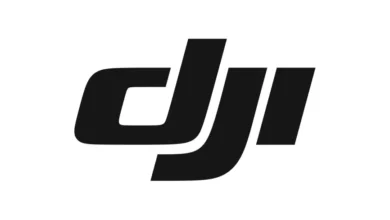RVIA Survey Shows What Buyers Value Most in Brick & Mortar Stores and Online
The RV Industry Association has released a first-of-its-kind Aftermarket Parts and Accessories Customer Survey revealing key buying habits of RVers and underlining what is most important to RV owners when shopping for parts and accessories in stores and online.
Cairn Consulting performed research for the survey. Cairn questioned 800 RVers who had traveled in an RV within the past year, and were heavily involved in decision-making about where to purchase aftermarket parts and accessories.
“The RV Industry Association strives to be the most credible source for macro RV market data, helping increase information and knowledge across the industry,” said Frank Hugelmeyer, RVIA’s president. “This study provides insightful and actionable data on the RV aftermarket segment of the industry that will be extremely valuable to our members and dealer partners in understanding and meeting evolving customer expectations.”
The aftermarket survey shows the average RVer made about six aftermarket purchases in the past two years, compared to the newest and younger RV owners, who made more than double that number. Among all those buyers, about one of every five purchases is made where the RV was bought, or secondarily, at one of the national retail chains, Amazon or local parts stores.
Among RV owners surveyed, satisfaction is highest for immediate availability of aftermarket products, return policy, store cleanliness, product knowledge at the stores and ease of finding a specific product. Lower levels of satisfaction are observed for seasonal promotions and standard price points.
When asked to choose the single most relevant factor, younger RVers are somewhat fragmented in what they choose as the most important in?uencer, whether it’s sale pricing, immediate availability or price points. By contrast, older RVers are twice as likely to say “the immediate availability of products.”
In addition, the newer and younger RV owners and shoppers demonstrate higher and more robust shopping intentions than older RVers, and most say they will probably purchase another RV sometime in the future.
The survey also underlines the fact that newer and younger RV owners not only buy more parts over a year but are more likely to spend more time and more money when they are shopping in stores, typically spending about $200 per visit compared with older owners’ $150. Those spending the least on in-store aftermarket purchases are the conventional travel trailer owners, who spend about $100 less than Class A and C motorhome and park model owners.
“This survey offers very important feedback from RV owners regarding what they look for when they shop for aftermarket parts,” said Piar Adams, VP of marketing, aftermarket and international sales for the RV Group, Airxcel, and co-chairman of the RVIA’s RV Aftermarket Committee. “Using this information, brick-and-mortar stores, as well as online sites, can create better experiences for RVers of all ages as buyers seek the widest selections of readily available parts, good price points, and the most convenient ways of shopping.”
Of the in-store buyers, two-thirds are drawn into the store by promotional ads and have a generally favorable view of technical assistance and quality of items in a specific store. However, some feel they do not always get the parts they are looking for, where fully half of the online shoppers surveyed indicate that parts availability is better online when compared to stores. There is somewhat of a gap in the availability of technical assistance online though, with 3-in-10 online shoppers rating this area as only good, fair, or poor.
“This new research offers tremendous information for the supplier, distributor, and dealer constituents of the RV aftermarket to utilize and develop business plans as they address a changing marketplace,” said Steve Johnson, buyer at Northern Wholesale Supply and co-chairman of the RV Aftermarket Committee. “The ability to collectively conduct this type of robust research project is a prime example of the value the RV Industry Association brings to our aftermarket members.”
Close to half of online purchasers intend to buy more aftermarket parts and accessories, compared to about one-fourth who intend to shop more in stores. Online shoppers, in general, have few problems navigating the websites they use for parts purchases. Not surprisingly, free shipping appears to impact the frequency of online shopping (83 percent). However, those surveyed said it is still essential for an online retailer to have brick-and-mortar locations, and even more (70 percent) said that sites that have brick-and-mortar locations influence their purchasing habits.
When selecting a vendor for parts, owners surveyed said that immediate availability is the most crucial consideration, followed by sales/promotions, return policy and finding products; seasonal promotions hold the least amount of importance followed by relationships at stores and standard price points. Overall, about two-thirds of aftermarket customers say it’s critical to have the parts available at the location they purchased their RV, especially among younger and newer RV purchasers.
The survey concludes that parts availability impacts about half of all RV aftermarket parts purchasers in terms of being able to get back on the road, with the impact even greater among new RV purchasers and those under 45 years of age. Quality of aftermarket products, the array of products and service are all positive contributors to the RVing experience, while delays in getting parts have a negative impact on one-third of all parts purchasers.

